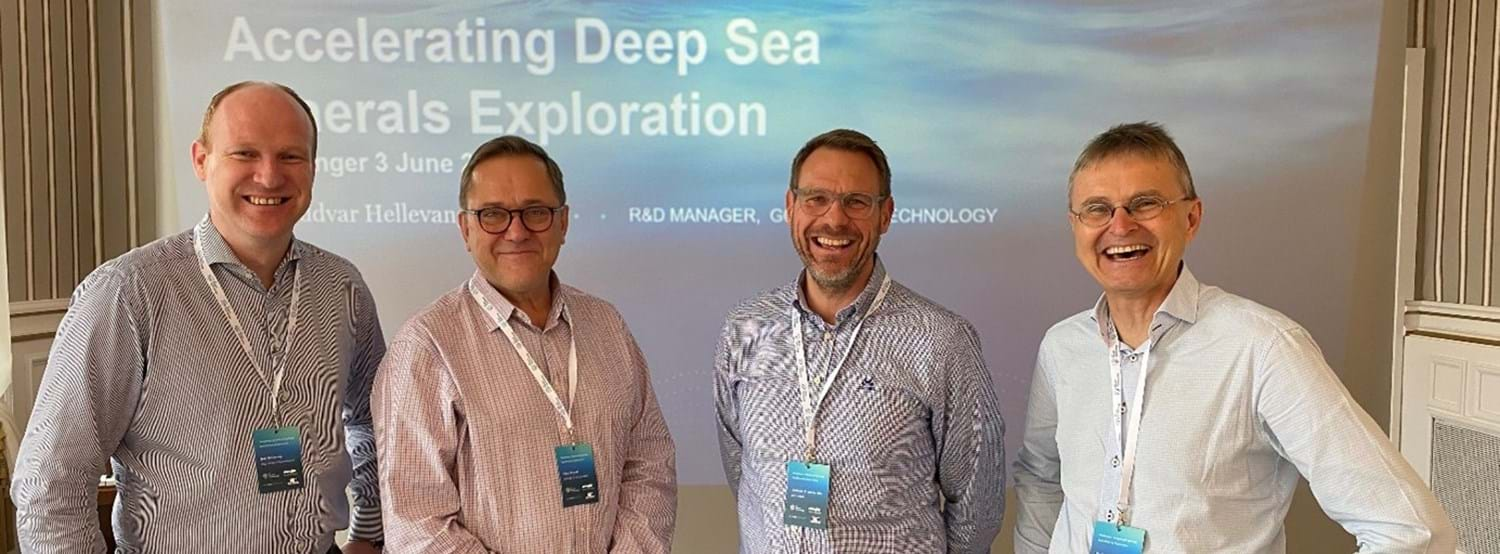NTNU: Benefits considerably from cluster collaboration

Knowledge and information exchange with the GCE Ocean Technology cluster is greatly beneficial for both for NTNU and the cluster companies.
- Being a part of a strong cluster, enables us to accomplish much more than if we were to do the same job alone. It is the sharing model that is the strength, says Egil Tjåland (photo), Associate Professor at the Department of Geoscience and Petroleum at the Norwegian University of Science and Technology (NTNU) in Trondheim.

Real data
Through the cluster, NTNU gets access to real data and issues that have enough substance that the researchers at the department find it interesting to research. In return, the university introduces issues that are important to them, to the cluster.
– We have common interests within oil and gas, and in the extraction of minerals on the seabed. We also research the environmental aspect, ethical issues, on-, and offshore wind turbines, and the interaction with wildlife and pollution that goes beyond the technical aspect.
We need real data to do research, and the industry has access to this. The industry, on their part, needs independent research results that they can rely on. We can provide that, so this goes both ways. We also have time to dive into small details that the industry does not have, says Tjåland.
This collaboration is valuable for both parties and it would have been much more difficult to achieve this if each individual member had to facilitate the exchange on their own.
Fruitful meetings
Common issues and cases often come up during meetings between the cluster members. Through the exchange of knowledge and information, new ideas emerge that can lead to projects. And the more that are gathered, the better. These meetings between actors who have the same field of interest initiate processes that can lead to new technology or new methods that can make the industries more efficient and not least more environmentally friendly.
– We get access to new partners, and the importance and amount of network, expertise and information the members get through the cluster cannot be underestimated, says Tjåland, who also holds the role of general secretary of the Norwegian Forum for Marine Minerals (NMM), which was established in 2019.
With an emphasis on collaboration
– GCE Ocean Technology is a cluster with a wide range of companies and a professional organisation with the muscle to get things done. That's good, because then the big companies don't have to be members of many special associations. It's handy to have a cluster administration that has the financial muscle to help set up meetings and conferences and can put together reports and get things done.
GCE Ocean Technology generate inspiration that he tries to bring into the forum he leads, and Tjåland is also concerned that the clusters that have common interests collaborate, like GCE Ocean Technology, Offshore Norway, GCE Node and the Norwegian Forum for Marine Minerals did during Arendalsuka. This brings more attention and more value for money. And money is needed to be able to do research.
– When we collaborate with industry and get data to work with, we also get funding for the projects, either on an independent basis or together with the Research Council of Norway, says Tjåland.
Contact Information


About
NTNU has its headquarters in Trondheim and campuses in Gjøvik and Ålesund.
- The university trains key personnel in technical subjects and is Norway's leading university of technology and the most important supplier of labor to Norwegian technology companies.
- NTNU was established in 1996 after a merger of the Norwegian Technical University (NTH), the Norwegian University of Science and Technology (AVH), the Science Museum (VM), the Faculty of Medicine (DMF), the Academy of Arts in Trondheim and the Conservatory of Music.
- The predecessor NTH was established in 1910, but the engineering education in Trondheim began in 1870, and the university dates back to the middle of the 18th century
- In 2016, NTNU merged with Høgskolen i Gjøvik, Høgskolen i Sør-Trøndelag and Høgskolen i Ålesund.
- The university has over 44,000 students, and the employees perform more than 7,700 man-years.
FACTS
NTNU is one of 18 partners from industry, R&D, academia and public bodies, which has recently signed a new 5-year agreement with GCE Ocean Technology.
The partners in the cluster are the leading force, and the backbone of the cluster's strategic work.
The partners get access to various arenas and projects where they meet potential customers, suppliers and partners.
Here, valuable knowledge is developed and shared between the cluster's +150 partners, members and collaborators.
